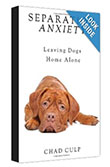 Question emailed from out of town – “We got a 9 week old pitbull puppy ten days ago. I have crate trained puppies before and never had a problem until this. The crate is sized so he can only stand up, turn around and lay down but he still poops in it. Even if only in for 30 minutes, he still poops! At first it was just poop, then yesterday we had him out in the house when he ran to his crate and peed in it. So frustrating! Any advice would be great. Thank You!”
Question emailed from out of town – “We got a 9 week old pitbull puppy ten days ago. I have crate trained puppies before and never had a problem until this. The crate is sized so he can only stand up, turn around and lay down but he still poops in it. Even if only in for 30 minutes, he still poops! At first it was just poop, then yesterday we had him out in the house when he ran to his crate and peed in it. So frustrating! Any advice would be great. Thank You!”
Answer – This can be tricky because the main reason for using a small crate is to tap the pup’s instinct to not soil where he sleeps or eats. The good news is that he is only 10 weeks old. The bad news is that he seems to have lost that natural instinct. This can happen for a couple reasons such as:
- The mama dog was not cleanly. The mama dog will usually clean her litter by licking them and clean the den by eating the puppy’s feces. “Ew! Gross!” Well, yeah, it’s kind of gross but it’s also cleanly compared to leaving poop everywhere. If the mama dog didn’t do this and the breeder wasn’t constantly cleaning it up then the pup would have been conditioned to live in filth.
- Puppy mills, pet stores and unknowledgeable/careless breeders often keep pups in small crate-type environments almost 24/7. This means they have no choice but to pee, poop, eat and sleep in the same small space, conditioning the pup to be comfortable living in filth.
The other interesting thing is that he was loose in the house and actually went out of his way to use the crate like a litterbox. He may have been trained by the breeder or foster to use pads or a litterbox of some sort. Some history on the pup might be helpful but we may never know so let’s just move forward.
Below are six suggestions that you may find helpful.
- Remove Bedding: Puppies tend to want to relieve themselves on absorbent surfaces such as grass, carpet or bedding. The breeder or foster may have taught the pups to use potty pads or newspaper. I would try removing all bedding from the crate to avoid encouraging him to think the crate is his toilet. You can add a comfortable bed after he’s trained.
- Make Sure He’s Empty and Tired: This may sound obvious but an “empty” puppy won’t pee or poop. Make sure his bladder and bowels are empty before putting him in the crate. Make sure he is tired as well so he will be more likely to relax and take a nap. When he wakes up take him out to potty immediately.
- Close the Crate: When he’s loose in the house close the crate so he can’t get back in. If he goes to the crate, take him outside for a potty break.
- Proper Clean Up: If it smells like a toilet, your pup will think it’s a toilet. Cleaning urine and feces with household cleaners is not good enough. You need to use vinegar or special enzyme cleaners. Just because it smells clean to us does not mean the scent is undetectable by your puppy. Puppies have very powerful sniffers!
- Forgo the Crate: Believe it or not, crates are not always necessary. I never used crates with any of the dogs I had growing. I’m not denying that crates are helpful because they are…especially with dogs that are primarily indoors. In this case, however, the crate is not serving its purpose and may actually be working against you. Without a crate you will still need some sort of confinement in the house like baby gates, ex-pens or keeping the pup on a leash. I don’t have enough information on this person’s case, since they emailed me from out of town, to say for sure but skipping the crate for a couple weeks might be worth a try.
- Vet Check: Although this doesn’t sound like a health issue I’d have your vet check things out just to be sure. It’s possible the pup can’t hold it because of a UTI or other health condition.
Need more help with housebreaking? Purchase the “Online Housebreaking Seminar” video here.
Check out www.ThrivingCanine.com for more free articles and videos.
-Chad Culp, Certified Dog Trainer and Canine Behavior Consultant
© Thriving Canine 2016



